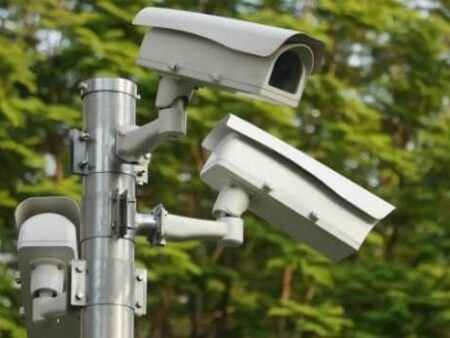Posted on: July 7, 2024, 06:49h.
Last updated on: July 7, 2024, 07:56h.
It’s not news when it’s hot in Las Vegas. Except when it’s hotter than it’s ever been there before. Sunday at 3:38 p.m. local time, according the National Weather Service (NWS), the mercury hit a record-shattering 120°F at the official airport weather station.

Las Vegas had already broken its temperature record when it hit 118°F at 2:33 p.m. the same day, the weather service said, besting the 117°F reading recorded on July 19, 2005 and tied on June 30, 2013; June 20, 2017; and July 10, 2021.
The forecast high for the day had been 117°F, according to the weather service, with about a 25% chance of breaking the record.
While it’s difficult to attribute a single weather event like this directly to climate change, research identifies Las Vegas as one of the fastest-warming regions in the west. Average summer temperatures here have risen nearly 6°F since 1970, and Las Vegas has not broken a low temperature record in 25 years.

One Degree of Separation
Many news outlets have historically reported Las Vegas’ previous record high not as 117°F but 118°F, as set on July 26, 1931. So Casino.org asked NWS meteorologist Daniel Berc for an explanation.
It turns out, the weather service has never considered that previously published record to be official. That’s because it was measured by Charles Pember “Pop” Squires, publisher of The Las Vegas Age newspaper, in his Fremont Street backyard.
“It isn’t because Squires wasn’t a meteorologist but that it wasn’t an official climate site,” Berc wrote in an e-mail. “Any observation taken before Jan. 1, 1937 is considered unofficial for the climate record.”
That’s when the weather service, then known as the US Weather Bureau, opened its official weather station at Nellis Air Force Base, which was then known as the Western Air Express Airfield.
That station was moved to Las Vegas’ civilian airport, then known as Alamo Field, on Dec. 18, 1948 — two days before it was renamed to honor Senator Pat McCarran.

Don’t be Under the Weather
If you plan to be outside at all in Vegas this week, be aware that cooling stations are open during daytime hours all along the Strip through at least Wednesday. Nevertheless, you must constantly drink water and be on guard against the two forms of heat sickness…
Heat Exhaustion
This can cause cramps and nausea. You may also look pale and clammy, and your heart rate could increase to try to compensate for the fluid lost to sweating. You may also become dizzy, weak, and even faint.
If you think you have heat exhaustion, get yourself indoors, lie down, elevate your feet and drink hydrating fluids — not alcohol. Applying cool, wet cloths to your underarms and body is also a good idea.
Heat Stroke
This is what happens when your body overheats beyond its upper-temperature limit, 106°F, which is quite easy to do in 119°F. This condition can denature your body’s proteins, causing internal organs to swell and nerve impulses to stop functioning. This greatly increases your risk of a heart attack. Symptoms include difficulty breathing, seizures, fever, and loss of consciousness.
If you suspect that you or someone you’re with has heat stroke, dial 911 immediately, because there are no more advanced stages of heat illness before seeing your dead grandmother at the end of a long tunnel of light.
Heat is the leading weather-related cause of mortality in the US, outpacing deaths from hurricanes by a factor of eight to one. In 2022, 1,714 deaths were attributed to heat-related causes, according to the Centers for Disease Control and Prevention. That’s a 740% increase over 2004.










